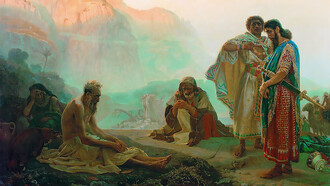Turkish influence in Hungary is a complex historical marvel that has evolved over centuries, primarily originating from the period of Ottoman Empire rule, which persisted in various regions of Hungary for nearly 150 years, from 1526 to 1686. This era saw significant administrative, cultural, and social changes, as the Ottomans introduced new governance structures and tax systems that shaped the Hungarian landscape. The cultural ramifications of this rule are evident in various facets of Hungarian life. The language absorbed numerous Turkish words, particularly in everyday vocabulary and culinary terms, reflecting a rich exchange between the two cultures. Traditional Hungarian cuisine features dishes such as "lángos" and "kebab," which have roots in Turkish culinary traditions.
In addition to culinary influences, the architectural landscape of Hungary bears the marks of Ottoman aesthetics, with notable examples such as the minarets in cities like Pécs and Szeged, which serve as reminders of this historical intertwining. The impact of Turkish customs and traditions is also observed in Hungarian folk music and dance, which incorporate elements reminiscent of Turkic styles.
Overall, the lasting legacy of Turkish influence is woven into the very fabric of Hungarian identity, making it a unique example of cultural fusion that continues to be felt in modern Hungary. This enduring influence underscores the continuity of history in modern Hungary.
Essential areas of impact encompass
Culture
The Ottomans introduced the captivating tradition of Turkish baths, known as hammams, to Hungary, where this practice evolved into a beloved cultural hallmark over the centuries. These opulent bathing houses, adorned with exquisite tile work and enveloped in serene atmospheres, became vibrant gathering spots for relaxation, rejuvenation, and social connection. The air within was infused with steam and the soothing sounds of water, creating an inviting sanctuary away from the bustle of daily life.
Furthermore, the legacy of Ottoman architecture continues to resonate throughout Hungary, especially in the southern regions, where graceful minarets and intricately designed structures stand as enduring symbols of a profound cultural exchange. These architectural marvels not only exhibit the artistry and craftsmanship of their era but also link the rich historical narrative to the contemporary landscape, enhancing Hungary’s architectural tapestry with their unique beauty and intricate storytelling.
Language
The Hungarian language is adorned with a rich tapestry of Turkish loanwords, particularly prevalent in categories such as culinary delights, attire, and the lexicon of everyday life. This fascinating linguistic influence can be traced back to the enduring presence of the Ottoman Empire in the region, which spanned several centuries and left an indelible mark on the cultural landscape.
For example, Hungarian culinary vocabulary boasts delightful terms like "pörkölt," a savory stew that tantalizes the taste buds, and "lángos," a warm, golden fried flatbread that has become a beloved street food. These words not only highlight specific dishes but also signify the melding of flavors and traditions.
In the realm of clothing, words such as "bársony," meaning velvet, exude a sense of luxury and richness, while "sál," referring to a scarf, conjure images of stylish warmth. These terms showcase the cultural exchange that has enriched Hungarian fashion.
Moreover, in the everyday vernacular, terms like "hús," meaning meat, and "cukor," translating to sugar, weave themselves seamlessly into daily conversation, illustrating how deeply Turkish has influenced Hungarian vocabulary. This interplay of languages has added unique flavors and expressions, creating a vibrant linguistic heritage that continues to evolve.
Food
Turkish cuisine has significantly enriched Hungarian gastronomy, introducing a vibrant array of flavors and ingredients that have become integral to local culinary traditions.
Military and political
The migration of Turkish tribes, particularly the Pechenegs and Cumans, during the 10th century marked a significant chapter in Hungary's history. Their settlement in the region not only bolstered Hungary's military capabilities but also played a crucial role in shaping the nation's burgeoning identity. This period of interaction set the stage for the enduring influence of the Ottoman Empire, which would later govern vast swaths of Hungary.
As the 19th century unfolded, illustrious Hungarian political figures like Lajos Kossuth found refuge within the protective bounds of the Ottoman Empire. Their experiences during this tumultuous time became intertwined with Hungary’s quest for autonomy and national pride, further enriching the tapestry of Hungary's history and its complex relationship with the Ottomans.
Ideological and nationalist movements
The concept of a Turkic origin for Hungary has long been a vibrant and influential theme woven into the fabric of Hungarian nationalism. This intriguing connection is particularly fervently embraced by movements such as Hungarian Turanism, which passionately highlights the historical and cultural ties that bind the Hungarian people to their Turkic ancestry. Proponents of this ideology celebrate a rich shared heritage, emphasizing the intertwined destinies of these peoples. They invoke a profound sense of unity and pride in their historical narrative, portraying it as a tapestry of shared values, experiences, and identities that echo through the ages.
Historical ties
The direct and indirect interactions with Turkic peoples, particularly through the influential Ottoman Empire, have profoundly shaped Hungarian culture, language, and traditions over the centuries. These encounters have woven a rich tapestry of influences, infusing Hungarian societal norms, artistic expressions, and linguistic elements with distinct Turkic characteristics, reflecting a complex history of collaboration, exchange, and cultural adaptation. This rich cultural exchange sheds light on the depth of the historical ties between Hungary and the Ottoman Empire.
Modern relations
Hungary and Turkey share deep-rooted economic and cultural connections that manifest in various forms, such as robust trade partnerships, significant investment flows, and collaborative efforts within the Organization of Turkic States. The historical imprint of Ottoman rule profoundly reshaped Hungarian society, ushering in an era marked by considerable transformation and cultural exchange. This period is characterized not only by shared heritage and influences in art, architecture, and language but also by a complex interplay of perspectives regarding the legacy of the Ottoman Empire. While many celebrate the rich cultural exchanges that arose, others highlight the darker aspects of conquest and oppression that accompanied this formidable period of history, illustrating the intricate tapestry of Hungary-Turkey relations.
The legacy of the Turks has left an indelible mark on Hungary, influencing various aspects of its culture and society. These influences are just a glimpse into the profound and lasting impact that Turkish heritage has had on shaping the character of Hungary.














